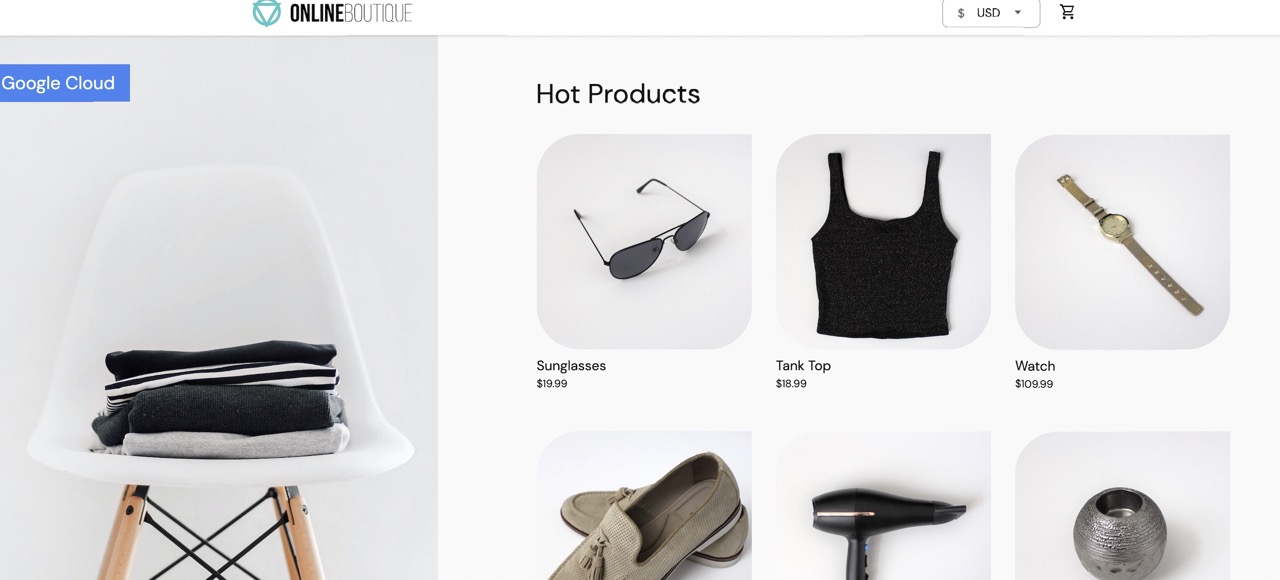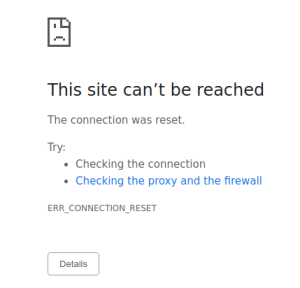在 Cloud Service Mesh 1.5 及更高版本中,默认情况下启用了自动双向 TLS(自动 mTLS)。通过自动 mTLS,客户端 Sidecar 代理会自动检测服务器是否具有 Sidecar。客户端 Sidecar 会将 mTLS 发送到具有 Sidecar 的工作负载,并将纯文本流量发送到没有 Sidecar 的工作负载。但请注意,服务会接受纯文本和 mTLS 流量。在向 Pod 注入边车代理时,我们还建议您将服务配置为仅接受 mTLS 流量。
借助 Cloud Service Mesh,您可以通过应用单个 YAML 文件在应用代码之外强制执行 mTLS。借助 Cloud Service Mesh,您可以灵活地将身份验证政策应用于整个服务网格、命名空间或单个工作负载。
费用
在本文档中,您将使用 Google Cloud的以下收费组件:
您可使用价格计算器,根据您的预计使用情况生成费用估算。
完成本教程后,您可以删除所创建的资源以避免持续产生费用。如需了解详情,请参阅清理。
准备工作
在 GKE 集群上配置 Cloud Service Mesh有多种安装方法可供使用:
克隆代码库:
git clone https://github.com/GoogleCloudPlatform/anthos-service-mesh-samples cd anthos-service-mesh-samples
部署入站流量网关
将
kubectl的当前上下文设置为相应集群:gcloud container clusters get-credentials CLUSTER_NAME \ --project=PROJECT_ID \ --zone=CLUSTER_LOCATION为入站流量网关创建命名空间:
kubectl create namespace asm-ingress启用用于注入的命名空间。具体步骤取决于控制平面实现。
托管式 (TD)
将默认注入标签应用于命名空间:
kubectl label namespace asm-ingress \ istio.io/rev- istio-injection=enabled --overwrite托管式 (Istiod)
建议:运行以下命令以将默认注入标签应用于命名空间:
kubectl label namespace asm-ingress \ istio.io/rev- istio-injection=enabled --overwrite如果您是使用托管式 Istiod 控制平面的现有用户:我们建议您使用默认注入,但也支持基于修订版本的注入。请按照以下说明操作:
运行以下命令以找到可用的发布渠道:
kubectl -n istio-system get controlplanerevision输出类似于以下内容:
NAME AGE asm-managed-rapid 6d7h在输出中,
NAME列下的值是与 Cloud Service Mesh 版本可用的发布渠道对应的修订版本标签。将修订版本标签应用于命名空间:
kubectl label namespace asm-ingress \ istio-injection- istio.io/rev=REVISION_LABEL --overwrite
在
anthos-service-mesh-samples代码库中部署示例网关:kubectl apply -n asm-ingress \ -f docs/shared/asm-ingress-gateway预期输出:
serviceaccount/asm-ingressgateway configured service/asm-ingressgateway configured deployment.apps/asm-ingressgateway configured gateway.networking.istio.io/asm-ingressgateway configured
部署 Online Boutique 示例应用
将
kubectl的当前上下文设置为相应集群(如果尚未设置):gcloud container clusters get-credentials CLUSTER_NAME \ --project=PROJECT_ID \ --zone=CLUSTER_LOCATION为示例应用创建命名空间:
kubectl create namespace onlineboutique为
onlineboutique命名空间添加标签以自动注入 Envoy 代理。按照相关步骤启用自动边车注入。部署示例应用、前端的
VirtualService以及工作负载的服务账号。在本教程中,您将部署 Online Boutique,这是一个微服务演示版应用。kubectl apply \ -n onlineboutique \ -f docs/shared/online-boutique/virtual-service.yaml kubectl apply \ -n onlineboutique \ -f docs/shared/online-boutique/service-accounts
查看服务
查看
onlineboutique命名空间中的 Pod:kubectl get pods -n onlineboutique预期输出:
NAME READY STATUS RESTARTS AGE adservice-85598d856b-m84m6 2/2 Running 0 2m7s cartservice-c77f6b866-m67vd 2/2 Running 0 2m8s checkoutservice-654c47f4b6-hqtqr 2/2 Running 0 2m10s currencyservice-59bc889674-jhk8z 2/2 Running 0 2m8s emailservice-5b9fff7cb8-8nqwz 2/2 Running 0 2m10s frontend-77b88cc7cb-mr4rp 2/2 Running 0 2m9s loadgenerator-6958f5bc8b-55q7w 2/2 Running 0 2m8s paymentservice-68dd9755bb-2jmb7 2/2 Running 0 2m9s productcatalogservice-84f95c95ff-c5kl6 2/2 Running 0 114s recommendationservice-64dc9dfbc8-xfs2t 2/2 Running 0 2m9s redis-cart-5b569cd47-cc2qd 2/2 Running 0 2m7s shippingservice-5488d5b6cb-lfhtt 2/2 Running 0 2m7s应用的所有 Pod 都应启动并运行,
READY列中应显示2/2。这表示 Pod 已成功注入 Envoy 边车代理。 如果几分钟后没有显示2/2,请查看问题排查指南。获取外部 IP 并将其设置为变量:
kubectl get services -n asm-ingress export FRONTEND_IP=$(kubectl --namespace asm-ingress \ get service --output jsonpath='{.items[0].status.loadBalancer.ingress[0].ip}' \ )您将看到类似如下所示的输出:
NAME TYPE CLUSTER-IP EXTERNAL-IP PORT(S) AGE asm-ingressgateway LoadBalancer 10.19.247.233 35.239.7.64 80:31380/TCP,443:31390/TCP,31400:31400/TCP 27m在网络浏览器中访问
EXTERNAL-IP地址。您应该会在浏览器中看到 Online Boutique 商店。
创建 TestCurl pod
创建 TestCurl Pod 以发送纯文本流量进行测试。
apiVersion: v1
kind: Pod
metadata:
name: testcurl
namespace: default
annotations:
sidecar.istio.io/inject: "false"
spec:
containers:
- name: curl
image: curlimages/curl
command: ["sleep", "600"]
访问 Online Boutique
将
kubectl的当前上下文设置为在其中部署 Online Boutique 的集群:gcloud container clusters get-credentials CLUSTER_NAME \ --project=PROJECT_ID \ --zone=CLUSTER_LOCATION列出
frontend命名空间中的服务:kubectl get services -n frontend请注意,
frontend-external是LoadBalancer,它具有外部 IP 地址。示例应用包含作为负载均衡器的服务,因此可以在不使用 Cloud Service Mesh 的情况下在 GKE 上部署。使用
frontend-external服务的外部 IP 地址在浏览器中访问该应用:http://FRONTEND_EXTERNAL_IP/Cloud Service Mesh 可让您部署入站流量网关。您还可以使用入站流量网关的外部 IP 地址来访问 Online Boutique。获取网关的外部 IP。使用以下信息替换占位符:
- GATEWAY_SERVICE_NAME:入站流量网关服务的名称。如果您部署了示例网关而未进行修改,或者您已部署默认入站流量网关,则名称为
istio-ingressgateway。 - GATEWAY_NAMESPACE:部署入站流量网关的命名空间。如果您部署了默认入站流量网关,则命名空间为
istio-system。
kubectl get service GATEWAY_NAME -n GATEWAY_NAMESPACE- GATEWAY_SERVICE_NAME:入站流量网关服务的名称。如果您部署了示例网关而未进行修改,或者您已部署默认入站流量网关,则名称为
在浏览器中打开另一个标签页,并使用入站流量网关的外部 IP 地址访问应用:
http://INGRESS_GATEWAY_EXTERNAL_IP/运行以下命令,使用来自另一个 Pod 的纯文本 HTTP
curl服务frontend。由于服务位于不同的命名空间,因此您需要对frontend服务的 DNS 名称进行 curl 转换。kubectl debug --image istio/base --target istio-proxy -it \ $(kubectl get pod -l app=productcatalogservice -n product-catalog -o jsonpath={.items..metadata.name}) \ -n product-catalog -- \ curl http://frontend.frontend.svc.cluster.local:80/ -o /dev/null -s -w '%{http_code}\n'请求成功并显示
200状态,因为在默认情况下,TLS 和纯文本流量均可接受。
按命名空间启用双向 TLS
您可以应用使用 kubectl 的 PeerAuthentication 政策来强制执行 mTLS。
将以下身份验证政策保存为
mtls-namespace.yaml。cat <<EOF > mtls-namespace.yaml apiVersion: "security.istio.io/v1beta1" kind: "PeerAuthentication" metadata: name: "namespace-policy" spec: mtls: mode: STRICT EOFYAML 中的
mode: STRICT行将服务配置为仅接受 mTLS。mode的默认值为PERMISSIVE,用于将服务配置为接受纯文本和 mTLS。应用身份验证政策,将所有 Online Boutique 服务配置为仅接受 mTLS:
for ns in ad cart checkout currency email frontend loadgenerator \ payment product-catalog recommendation shipping; do kubectl apply -n $ns -f mtls-namespace.yaml done预期输出:
peerauthentication.security.istio.io/namespace-policy created peerauthentication.security.istio.io/namespace-policy created peerauthentication.security.istio.io/namespace-policy created peerauthentication.security.istio.io/namespace-policy created peerauthentication.security.istio.io/namespace-policy created peerauthentication.security.istio.io/namespace-policy created peerauthentication.security.istio.io/namespace-policy created peerauthentication.security.istio.io/namespace-policy created peerauthentication.security.istio.io/namespace-policy created peerauthentication.security.istio.io/namespace-policy created peerauthentication.security.istio.io/namespace-policy created
转到在浏览器中使用
frontend-external服务的外部 IP 地址访问 Online Boutique 的标签页:http://FRONTEND_EXTERNAL_IP/刷新页面。 浏览器会显示以下错误:

刷新页面会导致将纯文本发送到
frontend服务。由于STRICT身份验证政策的原因,边车代理会阻止对服务的请求。在浏览器中转到使用
istio-ingressgateway的外部 IP 地址访问 Online Boutique 的标签,然后刷新页面,页面会成功显示。当您使用入站流量网关访问 Online Boutique 时,请求会采用以下路径:mTLS 身份验证流程:
- 浏览器将纯文本 HTTP 请求发送到服务器。
- 入站流量网关代理容器会拦截请求。
- 入站流量网关代理使用服务器端代理(在此示例中的前端服务)执行 TLS 握手。此握手包括交换证书。这些证书由 Cloud Service Mesh 预加载到代理容器中。
- 入站流量网关代理会对服务器证书执行安全命名检查,以确认是已获授权的身份正在运行服务器。
- 入站流量网关代理和服务器代理建立一个双向 TLS 连接,服务器代理将请求转发到服务器应用容器(前端服务)。
运行以下命令,使用来自另一个 Pod 的纯文本 HTTP
curl服务frontend。kubectl exec testcurl -n default -- curl \ http://frontend.frontend.svc.cluster.local:80/ -o /dev/null -s -w '%{http_code}\n'您的请求失败,因为我们正在从应用了严格
peerAuthentication政策的无边车工作负载发送纯文本流量。
查找和删除身份验证政策
如需获取服务网格中所有
PeerAuthentication政策的列表,请运行以下命令:kubectl get peerauthentication --all-namespaces输出类似于以下内容:
NAMESPACE NAME MODE AGE ad namespace-policy STRICT 17m cart namespace-policy STRICT 17m checkout namespace-policy STRICT 17m currency namespace-policy STRICT 17m email namespace-policy STRICT 17m frontend namespace-policy STRICT 17m loadgenerator namespace-policy STRICT 17m payment namespace-policy STRICT 17m product-catalog namespace-policy STRICT 17m recommendation namespace-policy STRICT 17m shipping namespace-policy STRICT 17m从所有 Online Boutique 命名空间中删除身份验证政策:
for ns in ad cart checkout currency email frontend loadgenerator payment \ product-catalog recommendation shipping; do kubectl delete peerauthentication -n $ns namespace-policy done;预期输出:
peerauthentication.security.istio.io "namespace-policy" deleted peerauthentication.security.istio.io "namespace-policy" deleted peerauthentication.security.istio.io "namespace-policy" deleted peerauthentication.security.istio.io "namespace-policy" deleted peerauthentication.security.istio.io "namespace-policy" deleted peerauthentication.security.istio.io "namespace-policy" deleted peerauthentication.security.istio.io "namespace-policy" deleted peerauthentication.security.istio.io "namespace-policy" deleted peerauthentication.security.istio.io "namespace-policy" deleted peerauthentication.security.istio.io "namespace-policy" deleted peerauthentication.security.istio.io "namespace-policy" deleted使用
frontend-external服务的外部 IP 地址访问 Online Boutique,然后刷新页面。页面将按预期显示。运行以下命令,使用来自另一个 Pod 的纯文本 HTTP
curl服务frontend。kubectl debug --image istio/base --target istio-proxy -it \ $(kubectl get pod -l app=productcatalogservice -n product-catalog -o jsonpath={.items..metadata.name}) \ -n product-catalog -- \ curl http://frontend.frontend.svc.cluster.local:80/ -o /dev/null -s -w '%{http_code}\n'请求成功并显示
200状态,因为在默认情况下,TLS 和纯文本流量均可接受。
在 Google Cloud 控制台中刷新显示工作负载列表的页面时,它现在会显示 mTLS 状态为 Permissive。
为每个工作负载启用双向 TLS
要为特定工作负载设置 PeerAuthentication 政策,您必须配置 selector 部分并指定与所需工作负载匹配的标签。但是,Cloud Service Mesh 无法为发送到服务的出站 mTLS 流量汇总工作负载级政策。您需要配置目标规则来管理该行为。
将身份验证政策应用于特定工作负载。请注意以下政策如何使用标签和选择器来定位特定的
frontend部署。cat <<EOF | kubectl apply -n frontend -f - apiVersion: "security.istio.io/v1beta1" kind: "PeerAuthentication" metadata: name: "frontend" namespace: "frontend" spec: selector: matchLabels: app: frontend mtls: mode: STRICT EOF预期输出:
peerauthentication.security.istio.io/frontend created
配置匹配的目标规则。
cat <<EOF | kubectl apply -n frontend -f - apiVersion: "networking.istio.io/v1alpha3" kind: "DestinationRule" metadata: name: "frontend" spec: host: "frontend.demo.svc.cluster.local" trafficPolicy: tls: mode: ISTIO_MUTUAL EOF预期输出:
destinationrule.networking.istio.io/frontend created
使用
frontend-external服务的外部 IP 地址访问 Online Boutique,然后刷新页面。该页面无法显示,因为frontend service设置为STRICTmTLS,边车代理会阻止请求。运行以下命令,使用来自另一个 Pod 的纯文本 HTTP
curl服务frontend。kubectl exec testcurl -n default -- curl \ http://frontend.frontend.svc.cluster.local:80/ -o /dev/null -s -w '%{http_code}\n'您的请求失败,因为我们正在从应用了严格
peerAuthentication政策的无边车工作负载发送纯文本流量。删除身份验证政策:
kubectl delete peerauthentication -n frontend frontend预期输出:
peerauthentication.security.istio.io "frontend" deleted删除目标规则:
kubectl delete destinationrule -n frontend frontend预期输出:
destinationrule.networking.istio.io "frontend" deleted
强制执行网格级 mTLS
如需阻止网格中的所有服务接受明文流量,请设置 mTLS 模式设置为 STRICT 的网格级 PeerAuthentication 政策。网格级 PeerAuthentication 政策不应具有选择器,并且必须在根命名空间 istio-system 中应用。部署政策时,控制平面会自动预配 TLS 证书,以便工作负载可以相互进行身份验证。
强制执行网格级 mTLS:
kubectl apply -f - <<EOF apiVersion: "security.istio.io/v1beta1" kind: "PeerAuthentication" metadata: name: "mesh-wide" namespace: "istio-system" spec: mtls: mode: STRICT EOF预期输出:
peerauthentication.security.istio.io/mesh-wide created
使用
frontend-external服务的外部 IP 地址访问 Online Boutique,然后刷新页面。页面不会显示。运行以下命令,使用来自另一个 Pod 的纯文本 HTTP
curl服务frontend。kubectl exec testcurl -n default -- curl \ http://frontend.frontend.svc.cluster.local:80/ -o /dev/null -s -w '%{http_code}\n'您的请求失败,因为我们正在从应用了严格
peerAuthentication政策的无边车工作负载发送纯文本流量。删除
mesh-wide政策:kubectl delete peerauthentication -n istio-system mesh-wide预期输出:
peerauthentication.security.istio.io "mesh-wide" deleted
清理
为避免因本教程中使用的资源导致您的 Google Cloud 账号产生费用,请删除包含这些资源的项目,或者保留项目但删除各个资源。
如果您想防止产生额外费用,请删除集群:
gcloud container clusters delete CLUSTER_NAME \ --project=PROJECT_ID \ --zone=CLUSTER_LOCATION如果您希望保留集群并移除 Online Boutique 示例,请执行以下操作:
- 删除应用命名空间:
kubectl delete -f online-boutique/kubernetes-manifests/namespaces预期输出:
namespace "ad" deleted namespace "cart" deleted namespace "checkout" deleted namespace "currency" deleted namespace "email" deleted namespace "frontend" deleted namespace "loadgenerator" deleted namespace "payment" deleted namespace "product-catalog" deleted namespace "recommendation" deleted namespace "shipping" deleted- 删除服务条目:
kubectl delete -f online-boutique/istio-manifests/allow-egress-googleapis.yaml预期输出:
serviceentry.networking.istio.io "allow-egress-googleapis" deleted serviceentry.networking.istio.io "allow-egress-google-metadata" deleted
后续步骤
- 如需查看有关如何配置
PeerAuthentication政策的一般指南,请参阅配置传输安全性。


